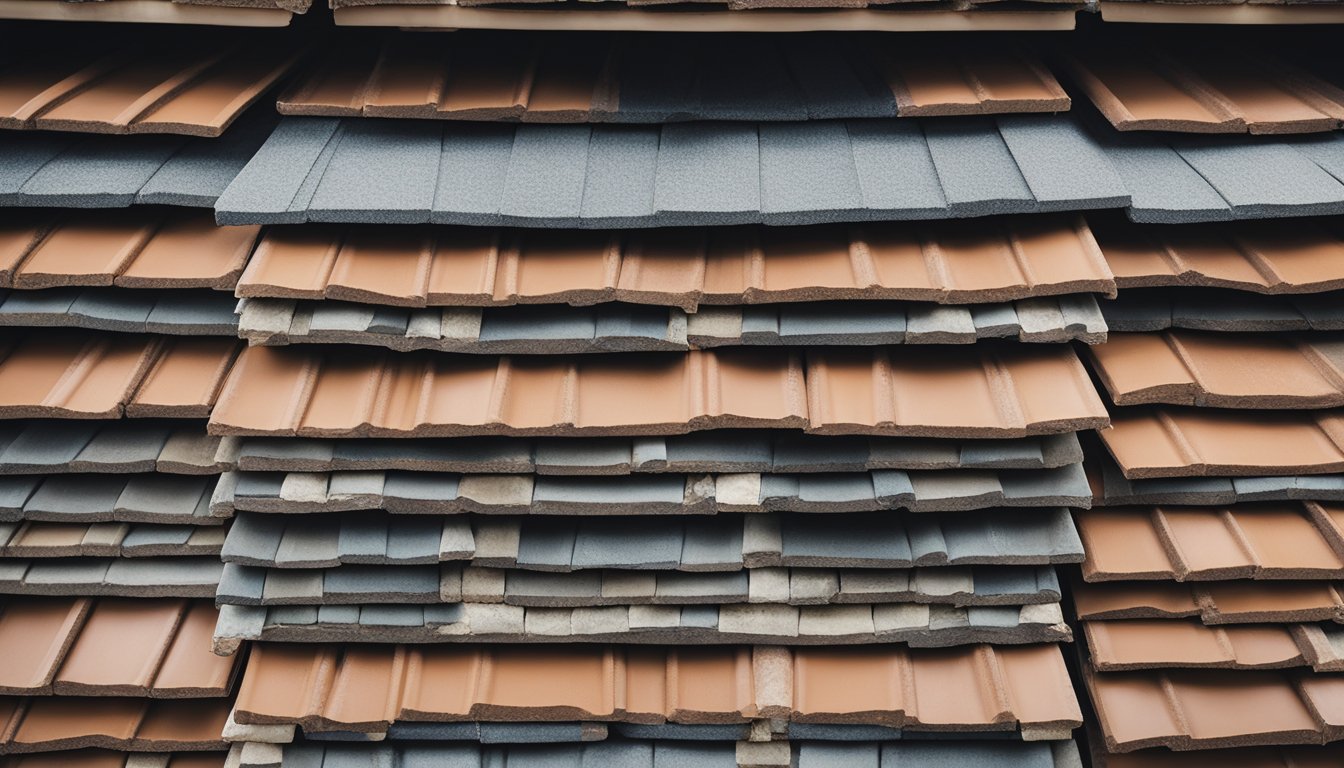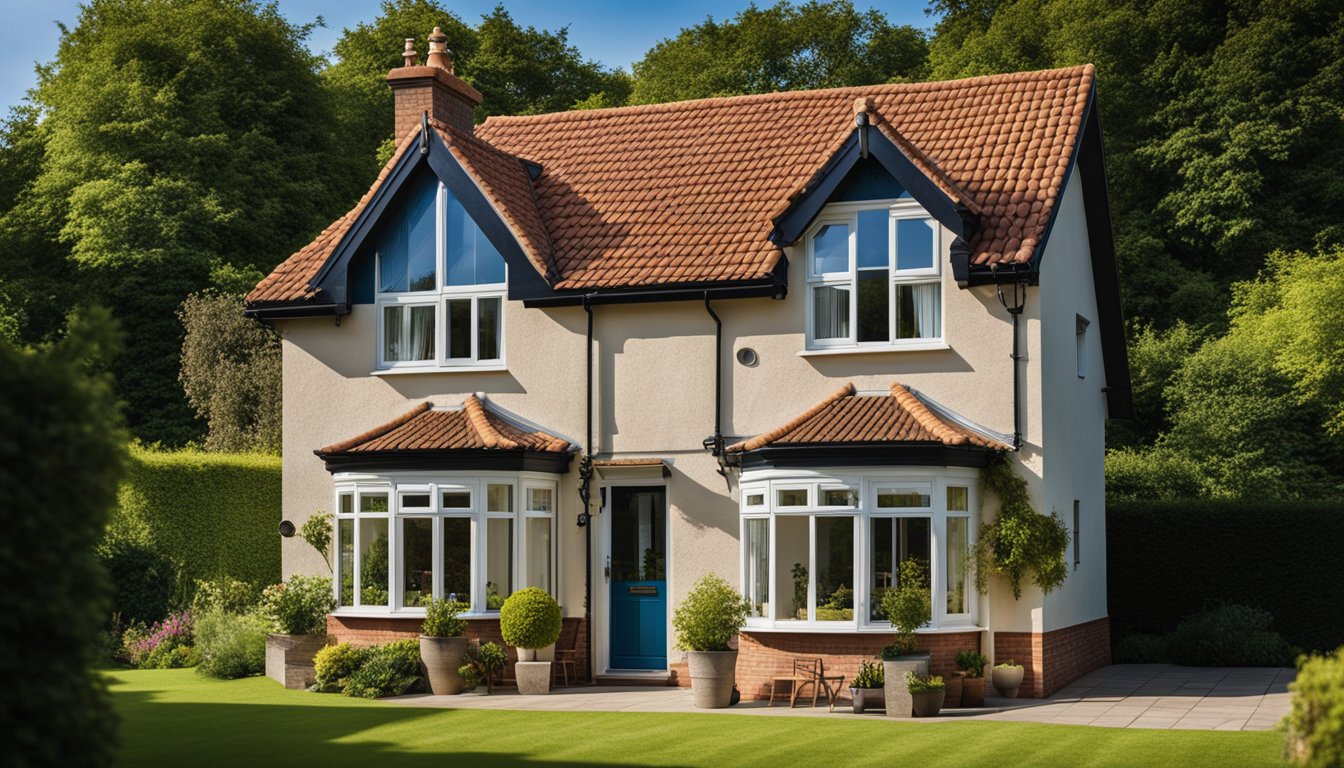Late updated: 11 Apr 2025 13:04
Written by: Oliver Bennett
Guide To Choosing Durable UK Roof Tiles: Essential Considerations for Longevity
Choosing the right roof tiles for your home in the UK is paramount to ensuring durability and a long-lasting roof. Roofing materials such as clay, slate, and concrete are known for their remarkable strength and ability to withstand harsh weather conditions. We can guide you through the variety of tiles available to ensure you make the best choice suited for your aesthetic and structural needs.

It's critical to consider not just the lifespan of different roofing materials but also their impact on the overall appearance and functionality of your home. Our guide will clarify the factors influencing tile longevity and performance, letting you make informed decisions without the guesswork.
Engaging with this article will provide valuable insights into frequently asked questions about roof tile selection, helping you understand the potential investment for your property. With dependable advice, we equip you with the knowledge to enhance your home's protection and beauty.
Key Takeaways
- Clay, slate, and concrete tiles offer excellent durability.
- Consider aesthetics, longevity, and performance when selecting tiles.
- Our guide answers common questions about roof tile choices.
Understanding Different Roof Tiles Materials
In the realm of roof tiles, selecting the right material involves balancing aesthetic appeal with performance. Each type has its own advantages in terms of durability, cost, and suitability for various climates.
Slate Tiles: Features and Benefits
Slate tiles, often crafted from natural slate, are known for their unmatched aesthetic appeal and longevity. They provide a classic, sophisticated look that has been favoured in the UK for centuries. Natural slate roof tiles are incredibly durable, often lasting over 100 years with proper maintenance.
Their ability to withstand harsh weather conditions, including rain and wind, makes them an excellent choice for various climates. Although their installation can be labour-intensive, the long lifespan and minimal maintenance requirements often offset the initial investment, offering excellent value over time.
Clay Tiles: Traditional Elegance
Clay roof tiles exude a timeless charm and are prized for their traditional elegance, making them a popular choice for heritage properties. Clay tiles offer excellent thermal mass, which helps regulate indoor temperatures, improving energy efficiency. Known for their high resistance to water absorption, they are ideal for areas with significant rainfall.
An important consideration is the occurrence of efflorescence, a natural process that can leave a white residue on the tiles. Despite this, the resilience and natural colouring of clay tiles enhance the building's beauty and offer durability against weather elements.
Concrete Tiles: Versatility and Performance
Concrete roof tiles present a versatile solution with their wide range of styles and colours, allowing for creative architectural designs. They are robust and can mimic the appearance of more expensive materials such as slate or wood, while still being cost-effective. Concrete tiles perform well in both hot and cold climates, thanks to their thermal mass, which aids in temperature regulation.
Efflorescence can also appear on concrete tiles, but this generally does not compromise their structural integrity. Maintenance involves routine checks to ensure the tiles remain in good condition, making them a practical option for homeowners prioritising durability and aesthetic flexibility.
Metal Roofing: Modern and Lightweight Solutions
Metal roofing offers a contemporary aesthetic and is applauded for its lightweight nature. It reduces the stress on building structures compared to heavier materials. Metals such as aluminium or steel provide durability against severe weather conditions, including snow and hail, while being resistant to common roofing issues like mould and insects.
The installation process is generally straightforward, and the reflective surface of metal roofs can aid in reducing energy costs by reflecting sunlight. Its recyclability also appeals to those inclined towards more sustainable building practices. With the right coating, metal roofing can resist corrosion, extending its lifespan considerably.
Factors Contributing to Tile Longevity and Performance

Choosing the right roof tiles can greatly influence a roof's durability and performance over time. Key factors include the method of installation, regular maintenance, and the roof’s pitch and structure. Each of these elements contributes significantly to the roof’s lifespan and efficiency.
Installation Considerations for Optimal Durability
Proper installation is crucial for ensuring the longevity of roof tiles. A professional roofing contractor should always handle the installation process to ensure all tiles are securely fastened and aligned. This helps prevent water ingress and damage caused by weather conditions.
The integrity of tile alignment and fastening determines how well the roof withstands environmental stresses, such as wind and rain. Incorrect installation can lead to premature wear, increasing future repair costs.
We must also consider the type of underlayment used. High-quality underlayment provides an additional layer of protection against moisture, enhancing the overall performance and durability of the roof. Choosing suitable materials helps achieve a balance between cost and durability, ensuring long-term savings.
Maintenance: Preserving Your Roof's Integrity
Regular maintenance plays a vital role in sustaining a roof's integrity. Frequent inspections help identify and address issues such as broken tiles and accumulated debris. This proactive approach prevents minor problems from becoming costly repairs.
A simple maintenance routine involves cleaning gutters, removing moss, and clearing debris, which helps maintain proper drainage and reduces stress on the tiles. Scheduling periodic inspections with roofing professionals identifies developing issues early, preserving the roof's functional longevity.
Routine maintenance not only extends the roof's lifespan but can also improve its energy efficiency. Well-maintained tiles facilitate better insulation, contributing to reduced energy costs. This strategy allows us to manage maintenance costs sensibly while prolonging the roof's life.
Roof Pitch and Structure: Maximizing Lifespan
The roof’s pitch and structure are fundamental to tile longevity. A well-designed pitch promotes efficient water runoff, reducing the chances of water pooling and tile degradation. It is important to ensure the roof pitch aligns with local weather conditions to optimise performance and durability.
A strong roof structure provides a stable foundation, supporting tile weight and preventing sagging or warping. Selecting appropriate materials and ensuring proper installation methods contribute to overall structural integrity.
Attention to pitch and structure also improves the ease of installation and can reduce long-term maintenance needs. Investing in a compatible design ensures our roof not only stands the test of time but also performs efficiently throughout its lifecycle.
Frequently Asked Questions

Our guide addresses common concerns about roof tiles, focusing on resilience, insulation, durability in the UK climate, and clay tile advantages. We also examine interlocking roof tile shapes and selecting tiles for older properties.
What are the most resilient types of roof tiles available in the UK?
Slate tiles are renowned for their durability and can withstand harsh weather conditions. Concrete tiles also provide excellent strength and longevity, making them a popular choice.
Which roof tiles provide the best insulation properties?
Clay tiles offer good thermal performance by regulating temperature changes. Concrete tiles also contribute to insulation, helping to maintain indoor temperatures effectively.
How long can one typically expect roof tiles to last in the UK climate?
Concrete and slate tiles often have a lifespan exceeding 50 years, with proper maintenance. Clay tiles, known for their durability, can last even longer, potentially over a century.
What are the distinct advantages of clay roof tiles over other materials?
Clay tiles are valued for their classic aesthetics and superior weather resistance. They also provide excellent colour retention and are fire-resistant, offering both safety and style.
Can you list the various shapes and types of interlocking roof tiles?
Interlocking roof tiles include designs like Double Roman, Pantile, and Flat Interlocking. These shapes facilitate simpler installation and improve the roof's weatherproofing.
What considerations should be made when selecting roof tiles for older properties?
For older properties, it's crucial to consider the heritage and architectural style. Matching the existing aesthetic with appropriate materials like slate or clay, which blend tradition with resilience, is essential.
